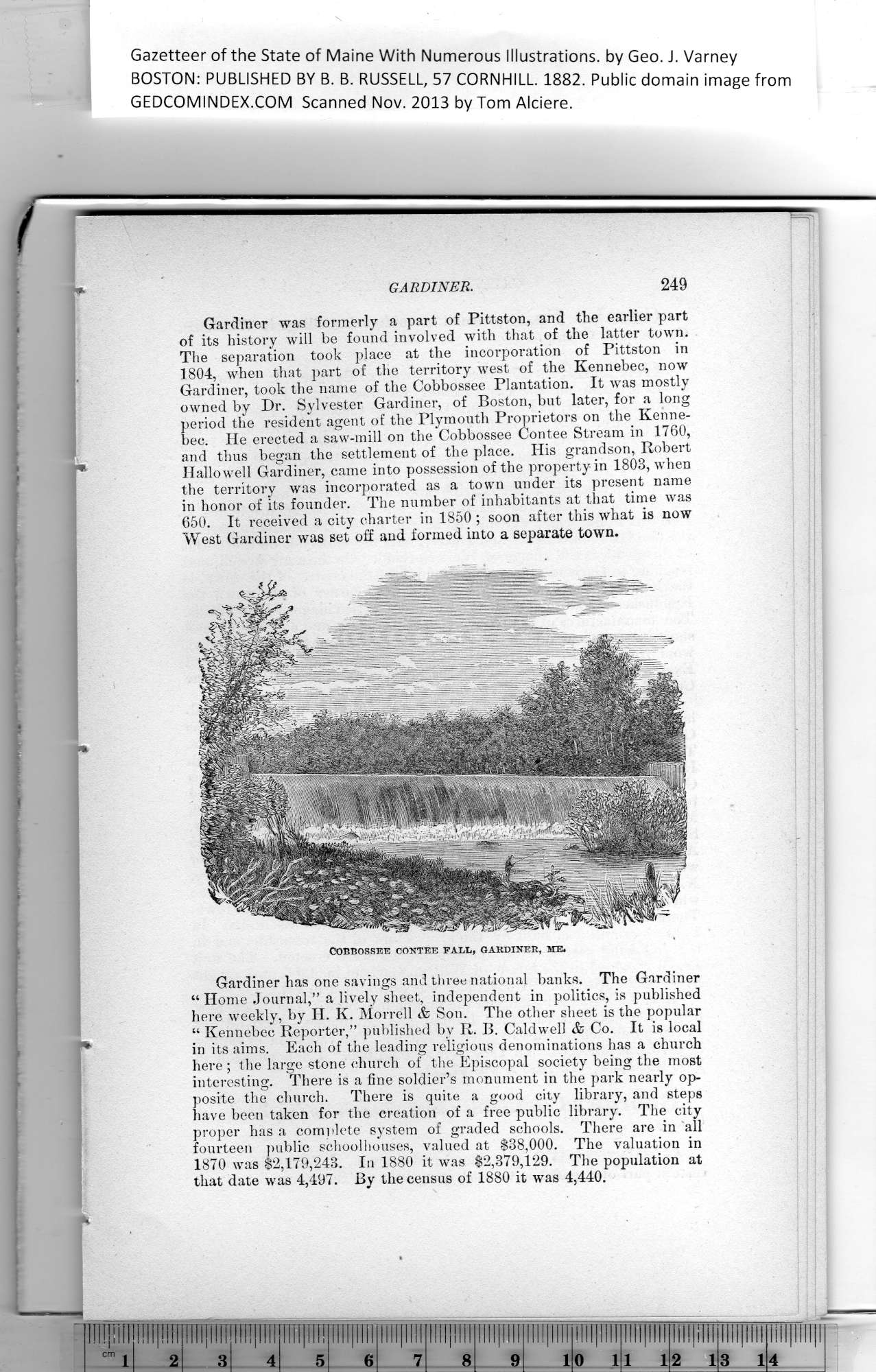|
Gazetteer of the State of Maine With Numerous Illustrations, by Geo. J. Varney
BOSTON: PUBLISHED BY B. B. RUSSELL, 57 CORNHILL. 1882. Public domain image from
GARDINER. 249
Gardiner was formerly a part of Pittston, and the earlier part
of its historv will be found involved with that of the latter town.
The separation took place at the incorporation of Pittston in
1804, when that part of the territory west of the Kennebec, now
Gardiner, took the name of the Cobbossee Plantation. It was mostly
owned by Dr. Sylvester Gardiner, of Boston, but later, for a long
period the resident agent of the Plymouth Proprietors on the Kenne-
Ibec. He erected a saw-mill on the Cobbossee Contee Stream in 1760,
and thus began the settlement of the place. His grandson, Robeit
m Hallowell Gardiner, came into possession of the property in 1803, when
the territory was incorporated as a town under its present name
in honor of its founder. The number of inhabitants at that time was
650. It received a city charter in 1850 ; soon after this what is now
West Gardiner wras set off and formed into a separate town.
Gardiner has one savings and three national banks. The Gardiner
“ Home Journal,” a lively sheet, independent in politics, is published
here weekly, by H. K. Morrell & Son. The other sheet is the popular
“ Kennebec Reporter,” published bv R. B. Caldwell & Co. It is local
in its aims. Each of the leading religious denominations has a church
here ; the large stone church of the Episcopal society being the most
interesting. There is a fine soldier’s monument in the park nearly op-
posite the church. There is quite a good city library, and steps
have been taken for the creation of a free public library. The city
proper has a complete system of graded schools. There are in all
fourteen public schoolhouses, valued at $38,000. The valuation in
1870 was $2,179,243. In 1880 it w*as $2,379,129. The population at
that date was 4,497. By the census of 1880 it was 4,440.
PREVIOUS PAGE ... NEXT PAGE
This page was written in HTML using a program written in Python 3.2
|
